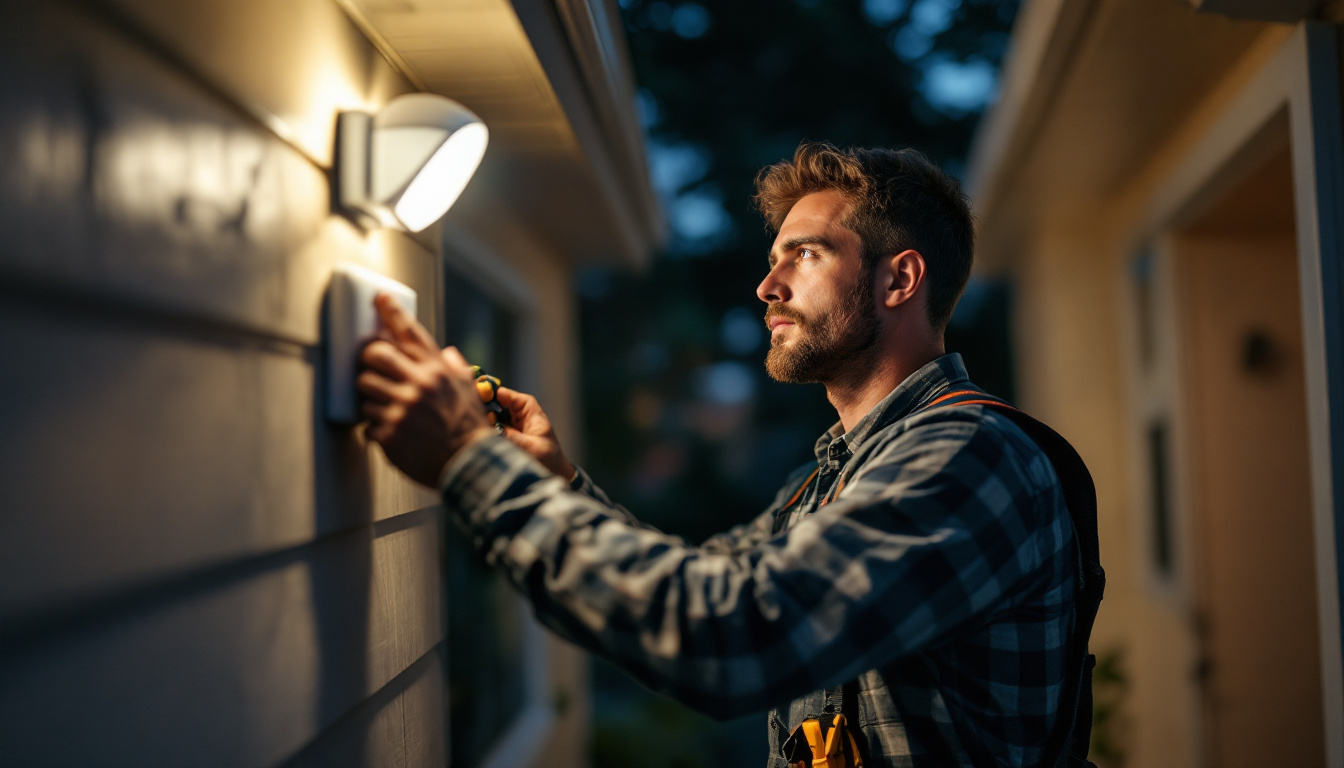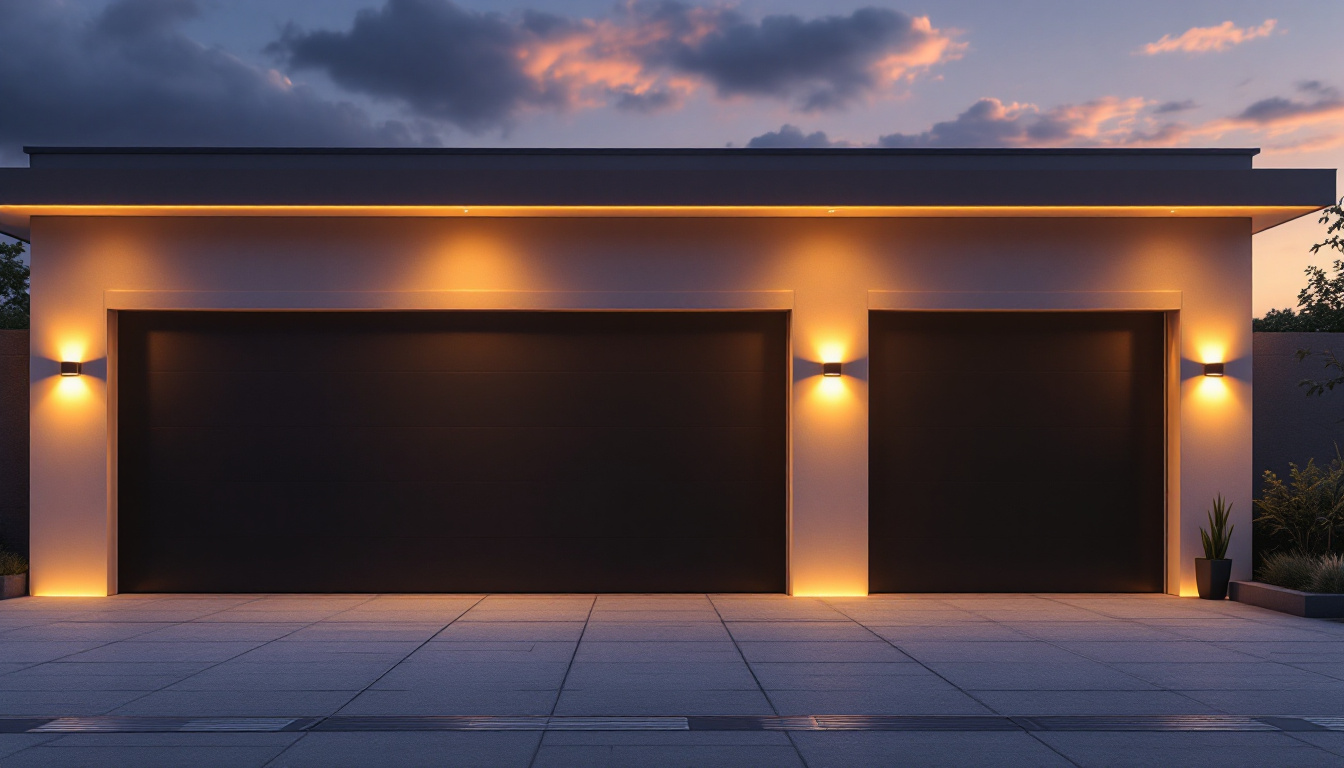
Motion detector lighting has become an essential component in modern lighting design, providing both security and energy efficiency. However, despite its advantages, many lighting contractors make common mistakes that can lead to ineffective installations. Understanding these pitfalls is crucial for delivering optimal results and ensuring client satisfaction. This article explores the most frequent errors made by lighting contractors when working with motion detector lighting systems.
Before delving into the common mistakes, it is important to understand how motion detector lighting works. These systems utilize sensors to detect movement within a specific range, automatically turning the lights on or off based on activity. This technology not only enhances security but also conserves energy by ensuring lights are only on when needed. The integration of motion detectors into lighting systems has revolutionized how we illuminate our spaces, making them more responsive and efficient.
There are several types of motion sensors used in lighting systems, including passive infrared (PIR), microwave, and dual technology sensors. Each type has its unique advantages and limitations, making it essential for contractors to choose the right sensor for the specific application. For instance, while PIR sensors are excellent for detecting heat signatures from living beings, they may struggle in environments with significant temperature fluctuations or obstacles that block their line of sight.
PIR sensors are the most common, detecting body heat as it moves across the sensor’s field of view. Microwave sensors, on the other hand, emit microwave pulses and detect movement based on changes in frequency. These sensors can penetrate through walls and other obstacles, making them suitable for applications where a broader detection area is required. Dual technology sensors combine both PIR and microwave technologies, offering enhanced reliability in various conditions. This combination allows for a more comprehensive detection capability, reducing the chances of false alarms while ensuring that the lighting activates only when necessary.
Motion detector lighting can be used in a variety of settings, including residential, commercial, and industrial environments. Common applications include outdoor security lighting, pathway illumination, and even indoor lighting in areas with high foot traffic. Understanding the intended application is vital for selecting the appropriate type of sensor and installation method. For example, in residential settings, motion detectors can be strategically placed near entry points to provide illumination when someone approaches, enhancing safety and convenience.
In commercial spaces, motion detector lighting can significantly reduce energy costs by ensuring that lights are only activated when employees or customers are present. This is particularly useful in large warehouses or retail environments where lighting can be a substantial overhead expense. Additionally, in industrial settings, these systems can improve safety by illuminating work areas only when personnel are present, thereby minimizing the risk of accidents in poorly lit zones. The versatility of motion detector lighting makes it an invaluable tool for modern lighting design, adapting to various needs and environments while promoting energy efficiency and safety.
Despite the benefits of motion detector lighting, many contractors fall into the trap of making installation errors. These mistakes can lead to malfunctioning systems, dissatisfied clients, and increased service calls. Here are some of the most common installation mistakes to avoid.
One of the most critical aspects of installing motion detector lighting is sensor placement. Many contractors fail to consider the sensor’s field of view, resulting in blind spots where motion is not detected. This can lead to areas that remain dark, defeating the purpose of the lighting system.
To avoid this mistake, contractors should thoroughly assess the area before installation. Factors such as the layout of the space, potential obstructions, and the expected movement patterns should all be taken into account. Proper placement ensures that the sensors can effectively cover the desired area. Additionally, it is beneficial to conduct a test run of the sensors after installation to confirm that they are detecting motion as intended. This proactive approach can save time and resources in the long run, as it allows for adjustments to be made before the system is fully operational.
Environmental factors can significantly impact the performance of motion detector lighting. For instance, extreme temperatures, humidity, and direct sunlight can affect sensor sensitivity and reliability. Contractors often overlook these factors, leading to installations that do not perform as intended.
It is essential to choose sensors that are rated for the specific environmental conditions of the installation site. Additionally, consider shielding sensors from direct sunlight or harsh weather to enhance their longevity and effectiveness. Furthermore, understanding the local climate can help in selecting the right type of motion detector. For example, in areas prone to heavy rainfall or snow, opting for weather-resistant models can prevent water damage and ensure consistent performance throughout the year. By taking these environmental considerations into account, contractors can enhance the durability and functionality of the lighting systems they install.
Another common area where mistakes occur is in the wiring and power supply of motion detector lighting systems. Incorrect wiring can lead to system failures, flickering lights, or even safety hazards. Here are some key considerations to keep in mind.
Using the wrong gauge of wire can lead to voltage drop issues, which may cause the lights to flicker or not function at all. Contractors should always refer to the manufacturer’s specifications regarding wiring requirements. It is also important to ensure that the wiring is suitable for the intended load of the lighting system.
Additionally, contractors should be mindful of the length of the wire run. Longer runs may require thicker wire to prevent voltage drop. Ensuring that the correct wiring is used not only enhances performance but also contributes to the longevity of the system.
Before finalizing an installation, it is crucial to test the power supply to ensure that it meets the requirements of the motion detector lighting system. Neglecting this step can result in systems that do not operate efficiently or fail altogether. Contractors should verify that the voltage and amperage are within the acceptable range specified by the manufacturer.
Once the physical installation is complete, configuring the motion detector lighting system is the next critical step. Many contractors make mistakes during this phase, leading to systems that do not perform optimally.
Many motion detectors come with adjustable sensitivity settings, allowing contractors to tailor the system to the specific environment. Failing to adjust these settings can result in either overly sensitive systems that trigger with minimal movement or systems that fail to detect motion altogether.
Contractors should take the time to test and adjust the sensitivity settings during installation. This may involve simulating movement in the area to ensure that the system responds appropriately. A well-calibrated system will provide reliable performance, enhancing client satisfaction.
Most motion detector lighting systems also feature adjustable time delay settings, which determine how long the lights remain on after detecting motion. Neglecting to configure these settings can lead to lights that turn off too quickly, frustrating users, or remain on for too long, wasting energy.
Contractors should discuss the appropriate time delay settings with clients based on their specific needs and the intended use of the space. This customization can significantly enhance the user experience and improve energy efficiency.
After installation, ongoing maintenance and follow-up are often overlooked by contractors. Ensuring that motion detector lighting systems continue to function optimally requires regular attention.
Contractors should provide clients with clear guidelines on how to maintain their motion detector lighting systems. This may include tips on cleaning the sensors, checking for obstructions, and testing the system periodically to ensure it is functioning correctly.
By equipping clients with this knowledge, contractors can help prevent issues from arising and extend the lifespan of the lighting system. Regular maintenance not only enhances performance but also builds trust and credibility with clients.
Offering follow-up services can also be beneficial for both contractors and clients. Regular check-ins can help identify any issues early on, allowing for timely repairs or adjustments. This proactive approach can lead to increased client satisfaction and loyalty.
Additionally, follow-up services can provide contractors with valuable feedback on the performance of their installations, helping them refine their techniques and avoid similar mistakes in the future.
Motion detector lighting systems offer numerous benefits, but common mistakes during installation can hinder their effectiveness. By understanding the basics of motion sensors, avoiding installation errors, ensuring proper wiring and configuration, and providing ongoing maintenance, lighting contractors can deliver high-quality installations that meet client expectations.
Staying informed about best practices and common pitfalls in motion detector lighting will not only enhance the performance of installations but also foster long-term relationships with clients. As the demand for energy-efficient and secure lighting solutions continues to grow, contractors who prioritize quality and attention to detail will stand out in a competitive market.
Ultimately, the success of a motion detector lighting installation lies in the contractor’s ability to navigate the complexities of the technology while maintaining a focus on client satisfaction. By avoiding common mistakes and embracing best practices, lighting contractors can ensure that their projects shine brightly.
Ready to avoid the common pitfalls of motion detector lighting installation and elevate your projects? At LumenWholesale, we provide lighting contractors with the highest quality, spec-grade lighting products at the most competitive wholesale prices. Say goodbye to local distributor markups and hello to a vast selection of reliable lighting solutions that meet the strictest industry standards. With our commitment to hassle-free bulk buying and free shipping, you can confidently equip your installations with the best without the worry of hidden fees. Wholesale Lighting at the Best Value is just a click away. Make the smart choice for your lighting needs with LumenWholesale and ensure your motion detector lighting projects are a shining success.

Discover how barnhouse lighting not only adds rustic charm but also boosts safety in your lighting installations.

Discover how LED bulb lights revolutionize safety in lighting installations.

Discover why purchasing flat panel lights in bulk from local distributors might not be the best choice.

Discover the key factors that distinguish top lighting contractors in outdoor garage lighting projects.